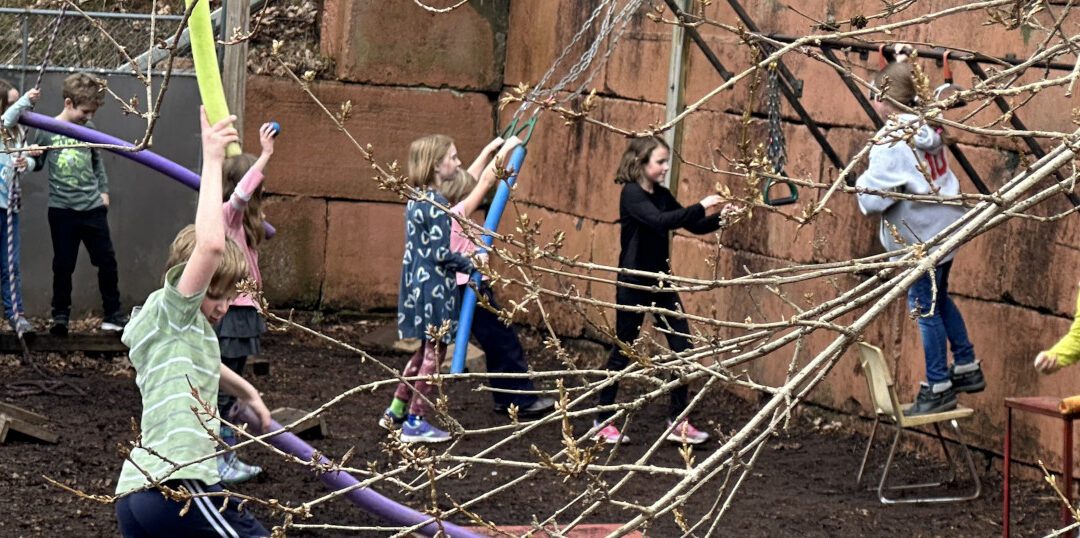We have been running the Playworker Development Course for almost 10 years now. It is still humbling to hear about people’s experiences with the course materials and how they apply playwork theory to real life. This post is by PDC student Austin Pack, reflecting on how this course has changed the way he thinks about his work with children.
“Coach Pack?” This is the name I have chosen for the last 18 years as a Kindergarten-8th grade Fitness teacher. Some students have pointed out that it is not my birth name, which would tie me to a specific career. My real name is Austin.
I reply, “Yes, what do you need?”
Children and their excuses
“Coach, I can’t run the lap or play the game today. I sprained my ankle during recess,” I often hear. Sometimes it’s, “My stomach hurts,” “I broke my leg yesterday,” “I have a headache” or “I’m sick but I don’t need to go home.” Occasionally, students claim, “The doctor says I have a heart condition.” Upon further investigation, most of these excuses turn out to be entirely false.
“Okay, well you can just rest and enjoy being outside on a lovely day,” I reply, concealing my skepticism as best I can. Often, an exaggerated limp follows as we move from the cinder track to our workout area, the Blacktop, accompanied by a groan for good measure. I know exactly when the student will suddenly be “healed.”
Structure of the class
My class follows a predictable structure: a warm-up, then a workout, followed by game time, and finally “Free Play” if time allows. We play games like Capture the Flag and pretend-animal chases. Students often help create new rules or invent entirely new games. The class sometimes votes on which game to play next.
We don’t have a gymnasium, nor do I want one. Most of our Fitness classes happen outside, in various campus spaces. Only when the weather is too rainy or too cold do we move indoors, which happens rarely.
The magic of free play
The scenario of feigned injury or illness occurs daily before workouts or games. However, whenever I yell “Free Play,” all complaints vanish. Students who were once curled in pain leap up and bolt toward the nearby woods. Injuries incurred during this time are bravely endured to avoid disrupting play. Autonomy truly is a healing agent.
A lesson from the playworker development course
My eureka moment came during my first steps into the Playworker Development Course. From Module 1, Essential Qualities of a Playworker:
“When playworkers say ‘play,’ we mean play in which children are able to decide what they want to do, how they will do it, and whom they will do it with. For us, play is about children’s freedom to develop their own experiences and set their own challenges.”
According to the Playwork Principles:
“Play is a process that is freely chosen, personally directed and intrinsically motivated. That is, children and young people determine and control the content and intent of their play, by following their own instincts, ideas and interests, in their own way for their own reasons.” (Playwork Principles Scrutiny Group, Cardiff, Wales 2005.)
I froze. I reeled. The phrase “freely chosen” hit me like a jab to the jaw. I realized I had been acting more like a dictator than a liberator.
Play is inherently free
At first, I blamed students for these emotional “injuries.” After all, I was giving them time to be outside moving and playing. They should be thankful. My class often becomes a favourite for many students. I now see how arrogant that belief was. Adults also create excuses to avoid unwanted activities. The failing lies in me – I was restricting their choices.
I used to think ‘game time’ and ‘play time’ were the same. Game time involved structured activities I deemed important. Free Play, I realized, is not a misnomer – play itself is inherently free. Reading the works of play theory experts challenged my previous assumptions.
My students have been teaching me for 18 years. Only now am I truly listening.
By Austin Pack
